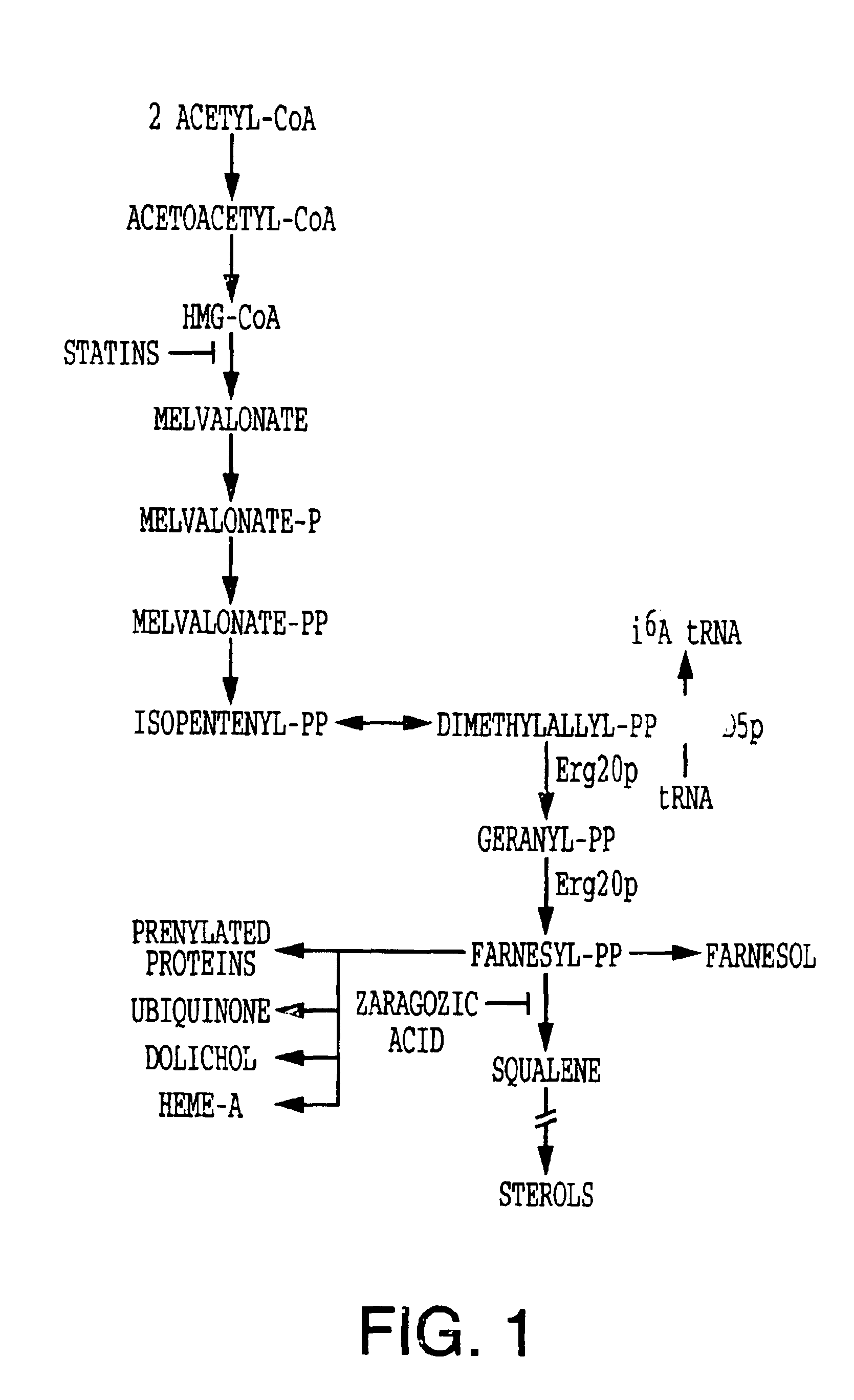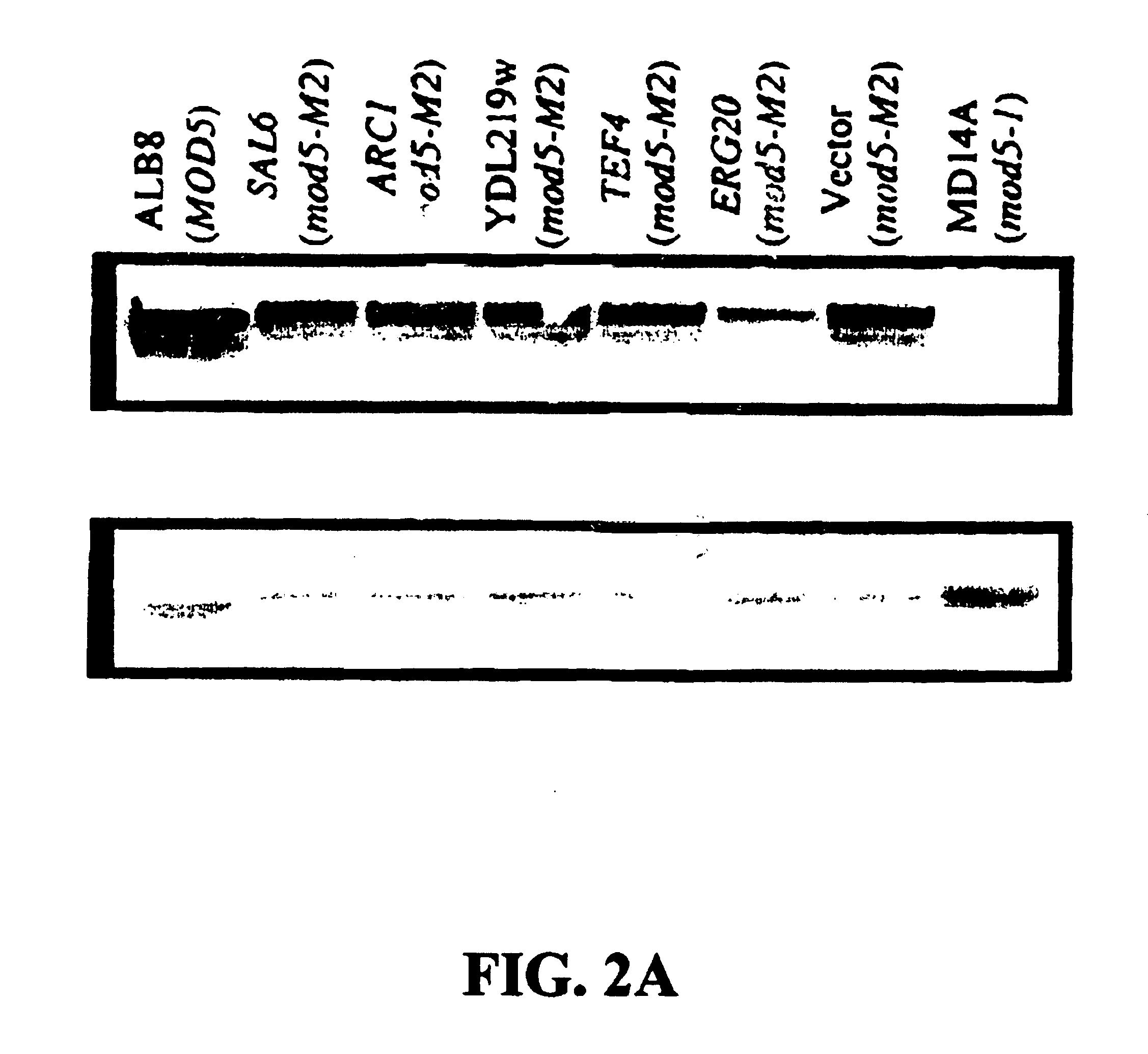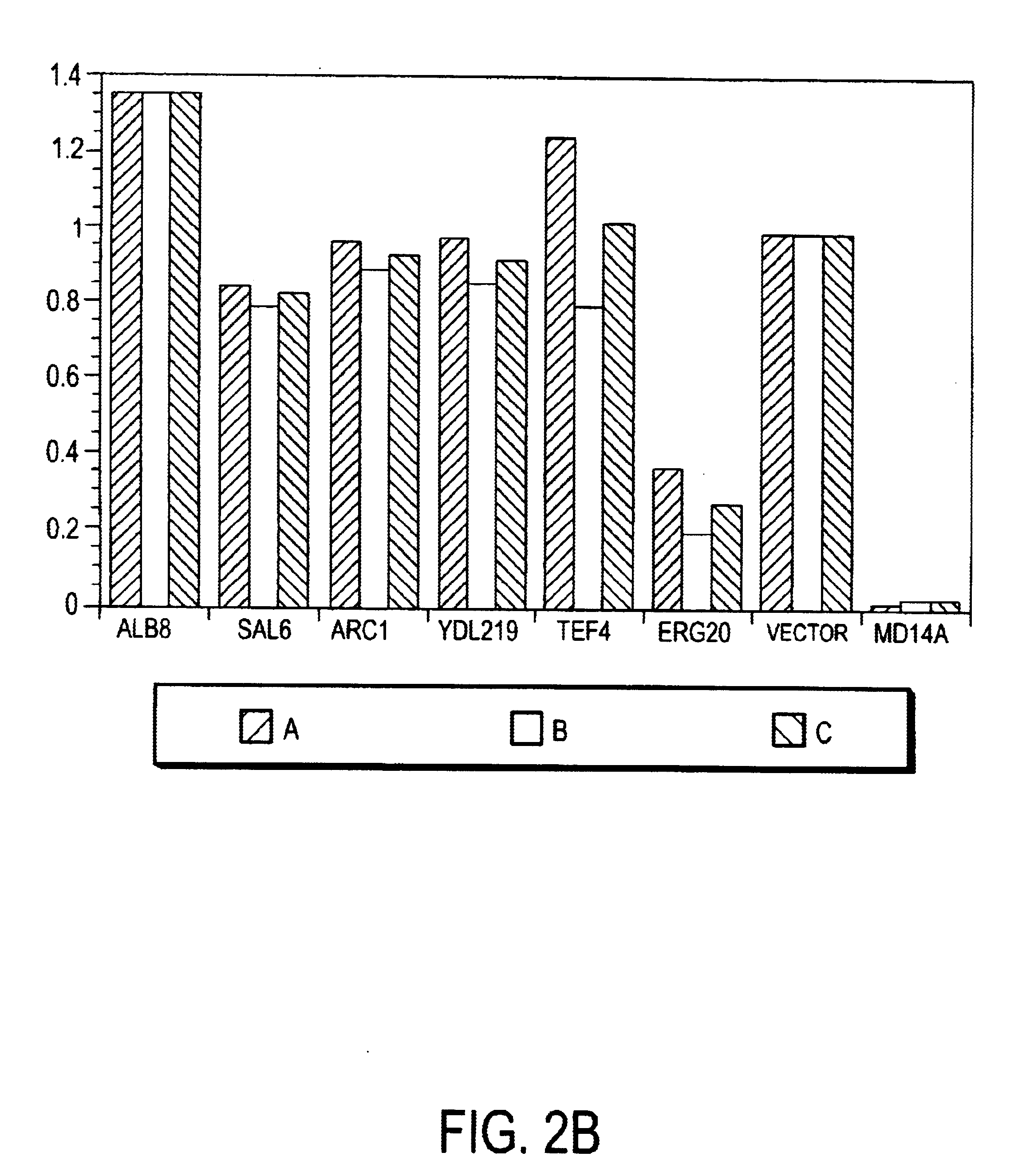Methods to identify modulators of the mevalonate pathway in sterol synthesis
a mevalonate pathway and sterol technology, applied in the field of methods to identify modulators of the mevalonate pathway in sterol synthesis, can solve the problem that cells cannot grow in its presence, and achieve the effects of preventing glomerular injury, promoting sup7 or sup11 trnas efficiency, and preventing rejection
- Summary
- Abstract
- Description
- Claims
- Application Information
AI Technical Summary
Benefits of technology
Problems solved by technology
Method used
Image
Examples
example 1
Identification of Plasmids Causing Reduced Nonsense Suppression and Sequencing of Inserts of Library Clones
The applicants employed the can1-100 and ade2-1 alleles in a mod5-M2 background (strain ALB1) to identify plasmids causing alterations in nonsense suppression. The strains were made as follows: Strain ALB1 (MAT.alpha. mod5-M2 SUP7 ade2-1 can1-100 leu2-3, -112 lys1-1 lys2-1 trp1 ura3-1) was created from MD14A (Gillman, et al., "MOD5 translation initiation sites determine N6-isopentenyladenosine modification of mitochondrial and cytoplasmic tRNA" Mol Cell Biol 14:2298-2306, 1994) by the replacement of the genomic mod5-1 through a pop-in / pop-out procedure (Rothstein, "Targeting, disruption, replacement, and allele rescue: integrative DNA transformation in yeast" Methods Enzymol 194:281-301, 1991). Plasmid YCfmod5-M2 (Gillman, et al., "MOD5 translation initiation sites determine N6-isopentenyladenosine modification of mitochondrial and cytoplasmic tRNA" Mol Cell Biol 14:2298-2306, ...
example 2
SAL6, TEF4, and YDL219w Confer Antisuppressor Phenotypes
SUP45 encodes a translation termination factor, and mutation of this gene can result in omnipotent suppression (Stansfield and Tuite, "Polypeptide chain termination in Saccharomyces cerevisiae" Curr Genet 25:385-395, 1994; Stansfield, et al., "The products of the SUP45 (eRF1) and SUP35 genes interact to mediate translation termination in Saccharomyces cerevisiae" EMBO J 14:4365-4373, 1995). When SAL6 is overexpressed in a yeast strain containing sup45-2, an anti-suppressor phenotype occurs (Vincent, et al., "The yeast translational allosuppressor, SAL6: a new member of the PP1-like phosphatase family with a long serine-rich N-terminal extension" Genetics 138:597-607, 1994). This suggested that the canavanine resistance conferred upon ALB1 by high levels of Sal6p also may be due to antisuppression. Therefore, all of the candidate genes were tested for effects upon translation by assessing whether they scored as antisuppressors o...
example 3
Overexpression of ERG20 Results in the Reduction of Isopentenyl Adenosine Present in tRNA
The protein encoded by ERG20, farnesyl diphosphate synthetase, catalyzes the formation of geranyl pyrophosphate and farnesyl pyrophosphate by the condensation of units of DMAPP and its isomer isopentenyl pyrophosphate (IPP). DMAPP is the same molecule used by Mod5p as a substrate in the synthesis of i.sup.6 A in tRNA (FIG. 1; Brown and Goldstein, "Multivalent feedback regulation of HMG CoA reductase, a control mechanism coordinating isoprenoid synthesis and cell growth" J Lipid Res 21:505-517, 1980; Voet and Voet, Biochemistry (Wiley, NY) 1990). It was possible that the large pool of Erg20p produced from the library clones used the DMAPP normally utilized for tRNA modification. This would cause reduced i.sup.6 A-modified tRNA and, hence, reduced function of these tRNAs in nonsense suppression. It was also possible that others of the candidate genes, when overexpressed, inhibited the formation of...
PUM
 Login to View More
Login to View More Abstract
Description
Claims
Application Information
 Login to View More
Login to View More - R&D
- Intellectual Property
- Life Sciences
- Materials
- Tech Scout
- Unparalleled Data Quality
- Higher Quality Content
- 60% Fewer Hallucinations
Browse by: Latest US Patents, China's latest patents, Technical Efficacy Thesaurus, Application Domain, Technology Topic, Popular Technical Reports.
© 2025 PatSnap. All rights reserved.Legal|Privacy policy|Modern Slavery Act Transparency Statement|Sitemap|About US| Contact US: help@patsnap.com



